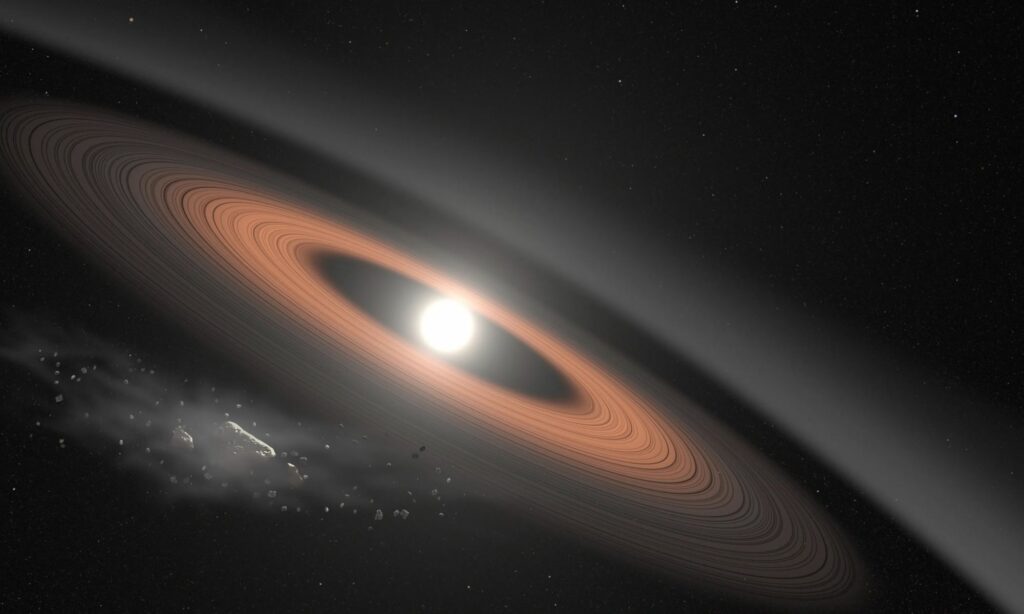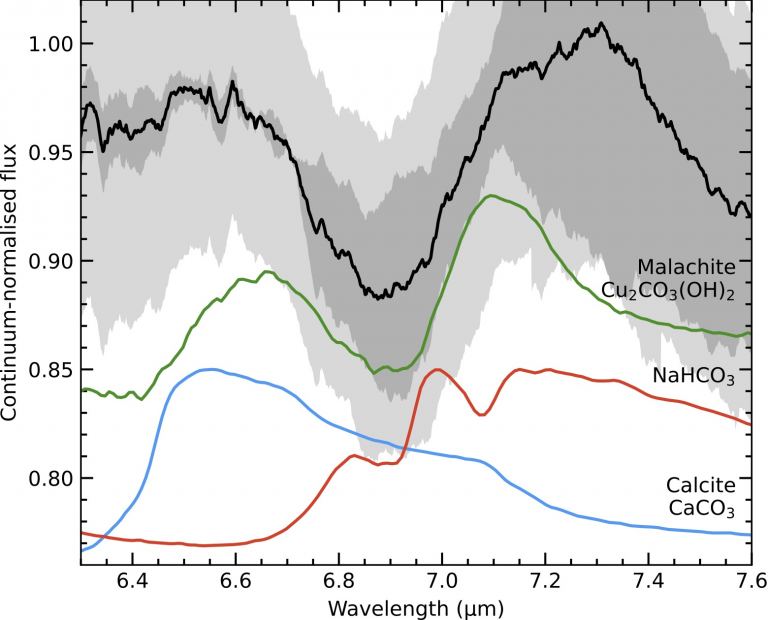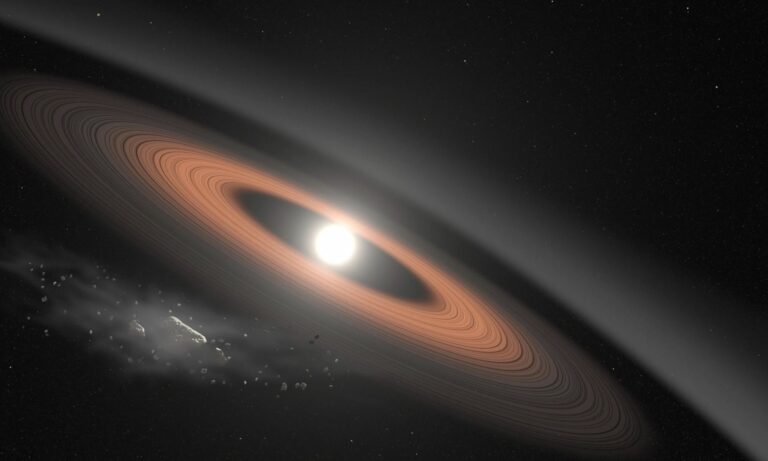JWST’s Gaze upon the White Dwarf’s Surrounding Debris Disc
Debris disks are a common phenomenon in the cosmos. Young stars sport protoplanetary disks from which planets take shape, while black holes boast accretion disks that fuel the creation of galactic jets. Even supernova remnants can give rise to disks around neutron stars. So, one might naturally wonder about the presence of debris disks around white dwarfs.

One might assume that white dwarf debris disks are prevalent. After all, neutron stars explode with immense force, shedding the majority of a star’s outer layers, whereas white dwarfs are the remnants of red giant stars that expand to form planetary nebulae. If neutron stars can retain enough material to form a debris disk, it stands to reason that white dwarfs can do the same. As it turns out, some white dwarfs do indeed exhibit debris disks. A small percentage of white dwarfs emit infrared radiation, suggesting the presence of surrounding material.
However, due to the challenging conditions posed by the surface temperatures and luminosity of white dwarfs, investigating their debris disks in depth has proven to be quite a task. Consequently, our knowledge regarding the composition and origins of these disks has been limited. Nevertheless, this situation is gradually changing, thanks to recent observations of a white dwarf debris disk conducted by the James Webb Space Telescope (JWST).

The observations pertain to a celestial object named WD 0145+234, which, in 2018, underwent an infrared outburst. This event indicated the potential disintegration of an asteroid or comet in orbit around the star. This aligns with the prevailing hypothesis that white dwarf accretion disks originate from the remnants of their own planetary systems, including planets and asteroids. The recent observations carried out by JWST not only validate the presence of such a disk but also lend support to the notion that these disks take shape through the collisions of celestial bodies orbiting the white dwarf.
In particular, spectral observations reveal the existence of silicate grains as remnants of these collisions. While silicates have been previously detected around white dwarfs, these fresh observations also hint at the potential existence of carbonates, which is an especially intriguing finding. Nevertheless, this outcome warrants further confirmation through subsequent observations. If substantiated, it implies that more substantial celestial bodies, possibly with diameters of at least tens of kilometers, have played a role in forming the debris disk. Carbonates typically form as a result of interactions with liquid water, suggesting that the bodies responsible for them must have been large enough to contain and melt water ice. This observation further suggests a parallel between white dwarf debris disks and the planetary systems within our own solar system, where carbonates are commonly present.
The research team continues to analyze the data to determine which observations may offer the most valuable insights for future investigations.
Reference: Swan, Andrew, et al. “The first white dwarf debris disk observed by JWST.” arXiv preprint arXiv:2310.09355 (2023).
Do not forget to share your opinion with us to provide you with the best posts !




0 Comments